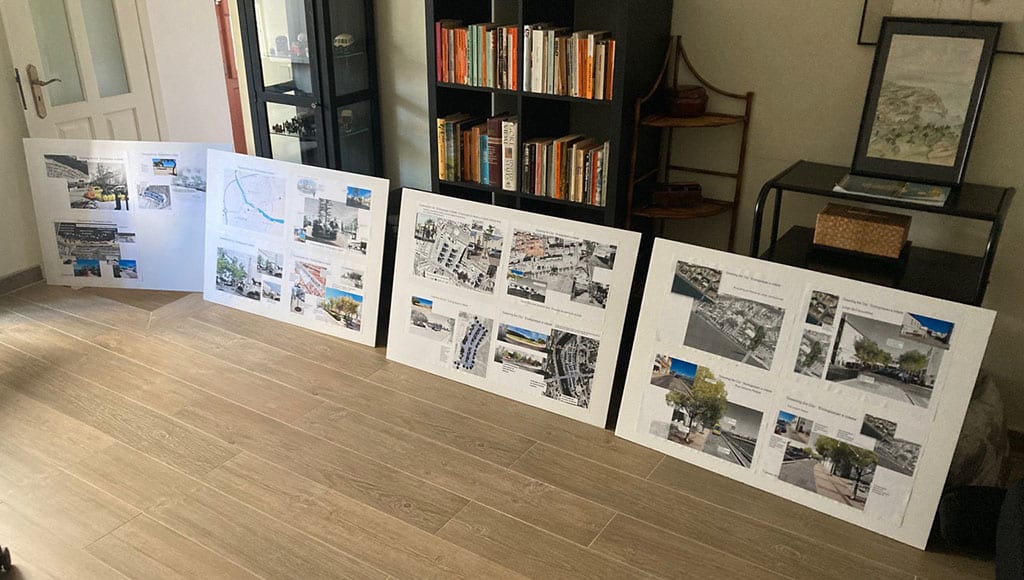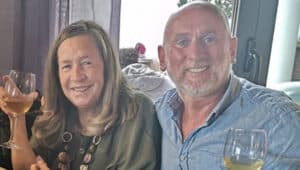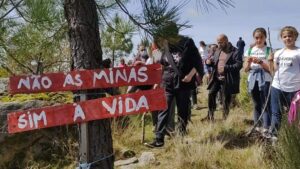Imagine boulevards of densely planted trees, café squares dappled with shade, and a town-centre free of cars. Peter Bellchambers has crafted this captivating vision for Tavira residents.
Speaking with him a few weeks before Earth Day, 22 April, Peter is irreverent and amusingly honest in his opinions. He openly shared his landscape ideas and is keen on the mayor of Tavira and all mayors throughout the Algarve to understand his vision.
He is conscious of being a guest in this resource-rich country and that forging local relationships is what builds a strong community.
Born in Totnes, Devon, in 1952, Peter’s early education at a Montessori school inspired his lifelong passion for creativity and sustainable design. As a seasoned landscape architect with over 40 years of experience in enhancing green spaces, Peter has made Tavira his home since 2018.
Before moving to Portugal, he lived in France with his Dutch wife, Yvonne Van Roekel. In France, he worked with mayors of all political persuasions to develop green spaces, not least on motorways, where hundreds of thousands of trees were planted along the sides of the roads, significantly transforming the landscape. Yvonne is a teacher, and as a couple, they actively engaged with children in the joy of planting in schoolyards.
A landscape architect is typically hired to assist a municipality during planning or environmental impact assessments.

In response to the Tavira climate change consultation, which ended on April 8, Peter used his expertise to develop montage vision boards. Based on his years of experience, these boards illustrate fourteen impactful projects focused on the strategic planting of trees throughout the town. He presented his proposals to the Ecotopia Association and later to the Algarve History Association at the Álvaro de Campos Library, inspiring community involvement in creating a greener future.
Peter’s vision boards, which use Google Earth, personal photos, and superimposed trees, inspire a new vision of some of Tavira’s concrete areas. These changes are not just about aesthetics but about creating a more liveable and regenerative urban environment. For example, the area near the new (not yet in use) theatre is revamped, potentially becoming a vibrant community space. Bishop’s Square is protected as a garden, with the suggestion of planting more trees for shade, which could significantly improve the area’s comfort and appeal during hot summers.
He also proposes planting trees to shade the buildings, visitors and cars in the ceremonial forecourt of the Igreja do Carmo.
We delved into the practicalities of Peter’s vision, discussing who could take on the responsibility of planting and watering the proposed trees. He underscored the crucial need for commitment and unified thinking between the municipality and the private water company, Tavira Verde.
Peter said, “In France, when trees are planted in a municipality, each tree is provided with a planting area of 3 metres by 3 metres by 1 metre deep, ensuring the possibility of survival. We normally used native trees, not fruit trees, that, after six months, required no watering.”
We discussed water misuse and asked why water gushes through the town, past the water station, and into the Gilão river. Could the relationship with Peter’s vision and ownership of the water station and water delivery be joined up so new areas of green trees could benefit from this water flow?
Peter is intrigued by the silence surrounding the Tavira mobility plan, which was put forward for consultation in March 2024. He wonders how the mobility plan relates to the climate action plan. He says, “many ideas in the climate action plan are to be celebrated, but there does not seem to be any explanation as to how they will be achieved or implemented.”
Peter’s designs also consider the allocation of greened parking spaces and the electrification of the train system without disruption to the Maria Flamingo organic farm or the urban community gardens at the former Tavira Agricultural Centre.
He argues, “municipalities should lose regional competition and look to other cities that have not put in new roads to accommodate electric trains.”
He was full of enthusiasm for the recent urban tree planting in Olhão.
“Look what they have done down by the Commercial Port in Olhão. It is a good example of landscape architecture and creative design. Besides all the new dense plantings of native trees, they have created a huge car parking space to keep cars out of the town.”
Peter and Yvonne have also authored and illustrated a now-sold-out book featuring a Podengo dog that tells its canine view of the history of Tavira. The book is called ‘Tavira through my eyes.’ The library still has copies available for consultation and lending.
During the climate action plan consultation period, Tavira Municipality invited and encouraged engagement in a series of events in villages across the region. Did you go and get your voice heard? Did you respond in writing to the climate action plan document?
ECOTOPIA ACTIVA is an association that has its origins in the Citizens’ Movement for the defence of the Tavira Agricultural Experimentation Centre and Tavira Urban Gardens. The movement has promoted multiple initiatives that have been highly valued by the community, including the mobilisation, contact and initial promotion of community gardens in Tavira, the organisation of debate forums, the halting of the development of a road project that would have harmed the Tavira agricultural experimentation centre, the promotion of thematic study visits focused on sustainability issues, and the production of videos and documentary series about the Tavira Agricultural Station, that has documented the memory of this emblematic space.
Al-Bio Association – Bio Regionalism
This initiative aims to understand to what extent the Sotavento Algarvio or the Algarve region meet the conditions and characteristics to become Bio-regions. The initiative also aims to explore how Agriculture, Biodiversity and Landscape can function as “part of a whole”, while promoting the economic and social development of territories, fostering sustainable food systems as key.
By Sue Hall
sue@suehall.net
Blog: suehall.net

























